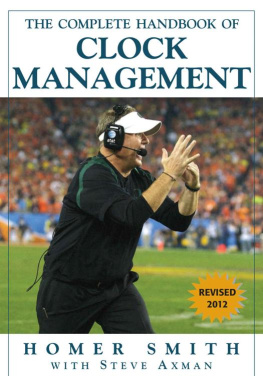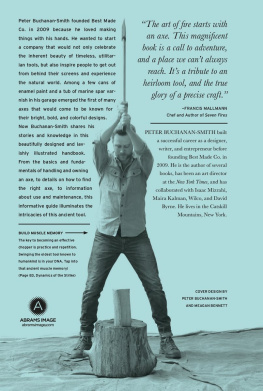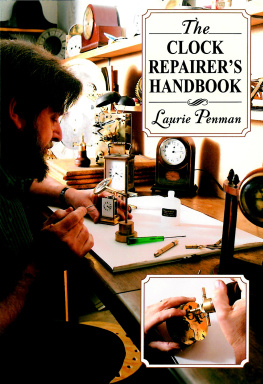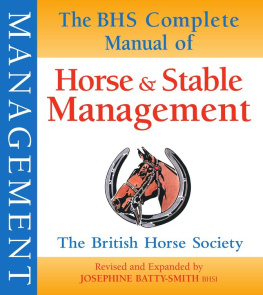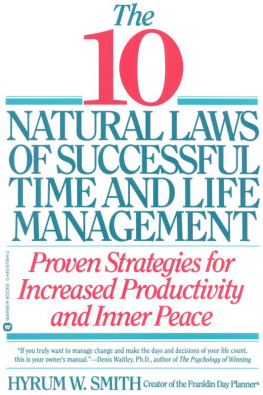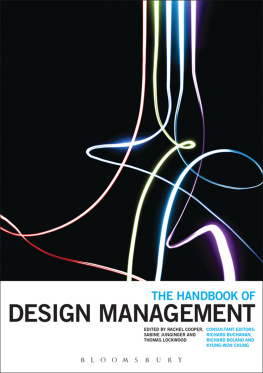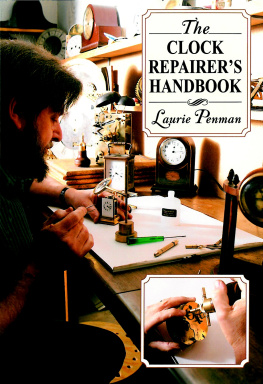Homer Smith - The Complete Handbook of Clock Management
Here you can read online Homer Smith - The Complete Handbook of Clock Management full text of the book (entire story) in english for free. Download pdf and epub, get meaning, cover and reviews about this ebook. year: 2012, publisher: Coaches Choice, genre: Children. Description of the work, (preface) as well as reviews are available. Best literature library LitArk.com created for fans of good reading and offers a wide selection of genres:
Romance novel
Science fiction
Adventure
Detective
Science
History
Home and family
Prose
Art
Politics
Computer
Non-fiction
Religion
Business
Children
Humor
Choose a favorite category and find really read worthwhile books. Enjoy immersion in the world of imagination, feel the emotions of the characters or learn something new for yourself, make an fascinating discovery.
- Book:The Complete Handbook of Clock Management
- Author:
- Publisher:Coaches Choice
- Genre:
- Year:2012
- Rating:4 / 5
- Favourites:Add to favourites
- Your mark:
- 80
- 1
- 2
- 3
- 4
- 5
The Complete Handbook of Clock Management: summary, description and annotation
We offer to read an annotation, description, summary or preface (depends on what the author of the book "The Complete Handbook of Clock Management" wrote himself). If you haven't found the necessary information about the book — write in the comments, we will try to find it.
The Complete Handbook of Clock Management — read online for free the complete book (whole text) full work
Below is the text of the book, divided by pages. System saving the place of the last page read, allows you to conveniently read the book "The Complete Handbook of Clock Management" online for free, without having to search again every time where you left off. Put a bookmark, and you can go to the page where you finished reading at any time.
Font size:
Interval:
Bookmark:
MANAGEMENT

with Steve Axman

2012 Coaches Choice. Revised edition. Al rights reserved. Printed in the United States.
No part of this book may be reproduced, stored in a retrieval system or transmitted in any form or by any means, electronic, mechanical, photocopying, recording or otherwise, without the written permission of Coaches Choice.
ISBN: 978-1-60679-204-9
Library of Congress Control Number: 2012930040
Book layout: Deborah Oldenburg
Diagrams: Deborah Oldenburg
Cover design: Jennifer Bokelmann
Front cover photo: Tony Leon/Southcreek Global/ZUMAPRESS.com
Coaches Choice
PO Box 1828
Monterey, CA 93942
www.coacheschoice.com
More than three decades ago, I had the opportunity to serve on Homer Smiths football staff at the United States Military Academy. During that three-year period, I was able to observe Coach Smith on countless occasionsas a leader, as my boss, and as someone who cared very deeply about the game of football. Homer was a teacher who was totally committed to the value of learning and the sharing of his knowledge with others. This he did frequently, openly, and freely.
As such, when I was asked to help continue Coach Smiths work on clock management, I proudly, humbly, and readily agreed. While Coach Smith had a number of books and articles published over the course of his lifetime, it could be argued that no topic interested him more than the importance and intricacies of sound football clock management. This book is a tremendous affirmation of Coach Smiths passion for this all important body of football knowledge.
It has been often said that learning has no off-season. Certainly, it doesnt for efficient and effective football coaches. Truth be known, the best coaches have always been great teachers. This book is dedicated to Homer Smithone of the best teachers the game of football has ever known.
Steve Axman
My appreciation to the head coaches for whom
I played and worked is inexpressible.
The late Charlie Caldwell at Princeton, my coach,
made me want to be a coach.
The late Jack Curtice at Stanford, an offensive pioneer, encouraged my first writing efforts.
Ben Martin at the Air Force Academy, an exemplar,
demonstrated how to bring out the power in young people.
Pepper Rodgers at UCLA, brilliant and daring, sold me on systematic football.
Terry Donahue at UCLA, wise and thorough,
let me do crazy things to make crucial points.
Frank Gansz at the Kansas City Chiefs, a former military pilot, showed me what preparation for fail-safe performance means.
Bill Curry at Alabama, a 10-year NFL center, had answers for my questions.
Dick Tomey at Arizona, a winner, gave me my final chance to get clock management right.
Special thanks to veteran SEC referee Al Ford for listening and advising, and to University of Georgia coach,
Mark Richt for a stimulating exchange.
Extra special thanks to my wife Kathy
who typed football materials for 46 years.
Homer Smith


The playing of football is at its best when players accept responsibility for the playing. When one player blames one coach for one problem, the playing is not at its best.
The managing of the clock is at its best when coaches accept responsibility for the managing. When one coach blames one player for one problem, the managing is not at its best.
Preparing for the playing is year-around and is supported by staffs and facilities. Preparing for the managing should be year-around and be supported by whatever will help. This book is designed to help.
You need a system for dealing with a moving clock, multiple variables, necessary barriers, ever-changing relativities, and demanded decisions. You need a system with structures, reference points, procedures, and warnings. You need a system for thinking ahead.


A system has answers. Systematic clock management, like systematic theology, covers everything that can happen. This book describes a system.
You have to plan forward on a clock that moves backward. You have to think ahead in numbers that require subtraction. You have to do arithmetic when numbers will not stand still.
Before a play you have to know the possible plays to call after the play. Before the play there may be five possible best-calls for five possible situations after the play, depending on the possible results and on what the clock might be doing.
Each of three variablestime, points, and ball-positionaffects the effect of each of the other two.
Each of these familiar tactics can be wrong:
throwing for a sideline
spiking to stop the clock
getting out-of-bounds to stop the clock
saving a time-out for a field goal
taking a knee to consume remaining seconds
After a game, your critics may take two days to figure out what you should have done. You may have had two seconds.
Case: Louisville is going to beat Florida State. On the field, it is clock city. In the final two minutes the TV commentators cover: a statue of Johnny Unitas, the Louisville QB having met Unitas, FSUs sack history, the weather, the FSU aura that is not there, the fields ability to take rain, Michael Jordan returning to the NBA, the defensive player of the game, and what went on earlier. Few things are more difficult than thinking ahead in a football game when the clock is involved, and the commentators avoided doing it.


Imagine yourself in situations that suggest the primary focus of the 22 chapters in this book:
You want to improve your clock offense. Where do you start? Is there a right approach? What are you in for? Chapter 1 INTRODUCING THE CHALLENGE
You are on his 12 in the second quarter, with one time-out and 00:36 on a first-down clock. What can you get done? Chapter 2 FIGURING TIME
Needing 10 points to win, you are on his 42, with the clock stopped at 02:19 for a measurement. It will be 2nd-and-inches or 1st-and-10. What should your team be doing during the measurement? Chapter 3 PLAYING FAST
Font size:
Interval:
Bookmark:
Similar books «The Complete Handbook of Clock Management»
Look at similar books to The Complete Handbook of Clock Management. We have selected literature similar in name and meaning in the hope of providing readers with more options to find new, interesting, not yet read works.
Discussion, reviews of the book The Complete Handbook of Clock Management and just readers' own opinions. Leave your comments, write what you think about the work, its meaning or the main characters. Specify what exactly you liked and what you didn't like, and why you think so.

